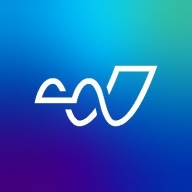

Trend Vision One and LogRhythm UEBA compete in the security and threat detection market. Trend Vision One seems to have the upper hand due to its comprehensive feature set and broad integration capabilities which enhance visibility and management efficiency.
Features: Trend Vision One provides robust endpoint protection, advanced detection techniques, and comprehensive security features. It excels in centralized management and offers detailed insights that enhance visibility. LogRhythm UEBA is strong in user behavior analysis and server threat hunting, but has less flexibility in integration compared to Trend Vision One.
Room for Improvement: Trend Vision One can enhance integration capabilities, reduce deployment complexity, and improve documentation. There is a need for better mobile security and streamlined user interfaces. LogRhythm UEBA requires more extensive dashboards and use cases along with enhanced machine learning capabilities to better compete with similar solutions.
Ease of Deployment and Customer Service: Trend Vision One supports hybrid and cloud environments and has responsive technical support, although some users report inconsistency in response times. LogRhythm UEBA, primarily on-premises, limits flexibility for cloud-transitioning businesses and has generally satisfactory technical support, with room for improvement in complex environments.
Pricing and ROI: Trend Vision One’s pricing is reasonable, offering modular pricing for flexibility. It is considered costly but justified by its features, resulting in improved ROI through time savings and risk reduction. LogRhythm UEBA is viewed as having high pricing, with mixed user opinions on its affordability compared to competitors, yet it achieves ROI through effective threat management despite potentially higher costs.


LogRhythm UEBA enables your security team to quickly and effectively detect, respond to, and neutralize both known and unknown threats. Providing evidence-based starting points for investigation, it employs a combination of scenario analytics techniques (e.g., statistical analysis, rate analysis, trend analysis, advanced correlation), and both supervised and unsupervised machine learning (ML).
Trend Vision One offers comprehensive protection for endpoints, networks, and email with centralized visibility. It is valued for its attack surface management, real-time threat detection, integrated management, ease of deployment, and user-friendly interface.
Trend Vision One provides a sophisticated security platform combining endpoint, network, and email protection with features like virtual patching and advanced AI capabilities. Its centralized management and integration with platforms like Office 365 and Azure make it an attractive option for organizations needing streamlined workflows and efficient risk management. While it boasts robust integrations and ease of use, enhancements are needed in reporting, tool integration, and reducing false positives. Users call for better support infrastructure, faster response times, and improved threat intelligence capabilities. Despite some complexity, its AI and ML features significantly enhance threat detection and response.
What Features Define Trend Vision One?
What Benefits Should Users Look For?
Trend Vision One is implemented in industries that require endpoint protection, ransomware defense, and incident response, being flexible for both on-premises and cloud environments. It is used to monitor servers, networks, and endpoints, providing features like email protection, behavioral detection, and threat visibility. Organizations benefit from AI and ML, improving their security posture and response capabilities.
We monitor all Extended Detection and Response (XDR) reviews to prevent fraudulent reviews and keep review quality high. We do not post reviews by company employees or direct competitors. We validate each review for authenticity via cross-reference with LinkedIn, and personal follow-up with the reviewer when necessary.